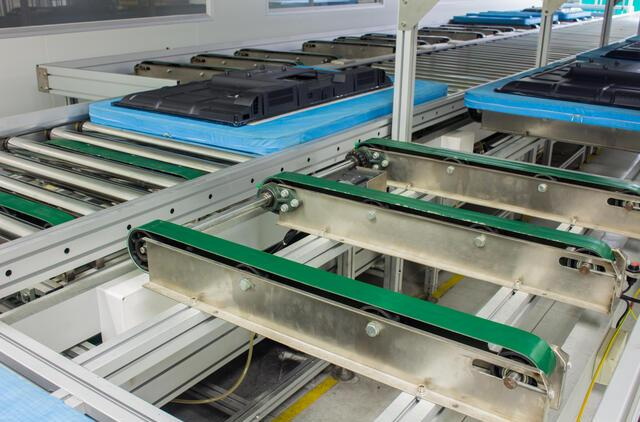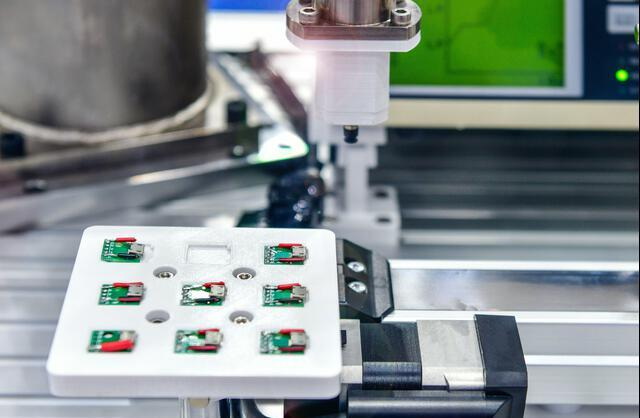Content Menu
● Understanding SMT Stencil Frames and Their Importance
● Common Mistakes to Avoid When Using SMT Stencil Frames
>> 1. Improper Alignment of the Stencil Frame to the PCB
>> 2. Incorrect Tensioning of the Stencil Foil in the Frame
>> 3. Using the Wrong Stencil Frame Material or Size
>> 4. Neglecting Regular Cleaning and Maintenance of the Stencil Frame and Foil
>> 5. Ignoring Environmental and Handling Conditions
>> 6. Using Incorrect Stencil Thickness or Aperture Design
>> 7. Failing to Monitor and Adjust Printing Parameters
● Best Practices for Using SMT Stencil Frames
● Conclusion
● FAQ
>> 1. What is the difference between framed and frameless SMT stencil frames?
>> 2. How often should SMT stencil frames be cleaned?
>> 3. What is the importance of stencil foil tension in the frame?
>> 4. How does stencil aperture design affect solder paste printing?
>> 5. What environmental conditions should be controlled when using SMT stencil frames?
● Citations:
Surface Mount Technology (SMT) stencil frames play a crucial role in the accurate and efficient application of solder paste during the PCB assembly process. Proper use of SMT stencil frames ensures high-quality solder joints, reduces defects, and improves overall manufacturing yield. However, there are several common mistakes that users often make when handling SMT stencil frames, which can adversely affect the printing process and final product quality. This article explores these common mistakes in detail and provides best practices to avoid them.

Understanding SMT Stencil Frames and Their Importance
SMT stencil frames are used to hold the stencil foil taut during the solder paste printing process. They come in two primary types:
- Framed Stencils: These are pre-stretched and permanently mounted onto a rigid frame, typically aluminum. They provide ease of alignment and consistent tension, making them ideal for high-volume production.
- Frameless Stencils: These are just the stencil foil without a frame and require tensioning systems or reusable frames to hold them taut. They are less expensive and easier to store but require more careful handling during alignment[1][4].
The frame ensures that the stencil remains flat and stable, which is essential for accurate paste deposition onto PCB pads. Improper use or handling of the stencil frame can lead to defects such as solder bridging, insufficient solder, or misalignment.
Common Mistakes to Avoid When Using SMT Stencil Frames
1. Improper Alignment of the Stencil Frame to the PCB
One of the most critical factors in SMT printing is the precise alignment of the stencil apertures with the PCB pads. Misalignment can cause insufficient solder paste deposition or bridging between pads.
- Cause: Failure to use fiducial marks or registration points on both the stencil and PCB can lead to poor alignment.
- Effect: Misalignment reduces the contact area between solder paste and pad, lowering adhesion and causing printing defects.
- Avoidance: Always ensure the stencil frame is aligned using fiducial marks and proper alignment equipment. Automated alignment systems can significantly reduce human error[1][6].
2. Incorrect Tensioning of the Stencil Foil in the Frame
The stencil foil must be stretched to the correct tension to prevent sagging or warping during printing.
- Cause: Over-tensioning can cause the foil to warp or tear, while under-tensioning leads to sagging and inconsistent paste deposition.
- Effect: Both conditions result in print defects such as non-uniform solder paste thickness and smudging.
- Avoidance: Use tensioning systems designed for your stencil frames and follow manufacturer guidelines for optimal tension levels[1][6].
3. Using the Wrong Stencil Frame Material or Size
The frame material and size must be compatible with the stencil foil and the printing equipment.
- Cause: Using frames that are too thick, warped, or made from inappropriate materials can cause mounting issues.
- Effect: This can lead to uneven pressure during printing, causing defects such as solder balls or insufficient fills.
- Avoidance: Choose hollow or solid aluminum frames with flat bottoms and uniform thickness as specified (e.g., 40±3mm thickness, flatness within 1.5mm)[7].
4. Neglecting Regular Cleaning and Maintenance of the Stencil Frame and Foil
Solder paste residue can build up on the stencil foil and frame, clogging apertures and causing defects.
- Cause: Failure to clean the stencil frame and foil regularly.
- Effect: Aperture clogging leads to insufficient solder paste deposition and open solder joints.
- Avoidance: Implement a regular cleaning schedule using appropriate solvents, ultrasonic cleaning, or automated cleaning systems. Inspect apertures for damage or blockage frequently[2][3].

5. Ignoring Environmental and Handling Conditions
Environmental factors such as humidity and temperature, as well as improper handling, can affect stencil frame performance.
- Cause: Exposure to moisture can cause solder paste to slump or degrade; rough handling can damage the stencil foil or frame.
- Effect: Leads to printing inconsistencies, solder bridging, or stencil damage.
- Avoidance: Store stencil frames in clean, dry environments with protective covers. Handle frames carefully to avoid bending or contaminating the foil[2][8].
6. Using Incorrect Stencil Thickness or Aperture Design
The thickness of the stencil foil and the design of apertures directly impact solder paste volume and print quality.
- Cause: Using a stencil thickness that is too thick or apertures with poor aspect or area ratios.
- Effect: Excessive solder paste can cause bridging, while too little can cause open circuits.
- Avoidance: Design apertures with an area ratio of 0.66 or higher and maintain proper aspect ratios (width to thickness). Adjust stencil thickness based on component size and pitch[2][8].
7. Failing to Monitor and Adjust Printing Parameters
Parameters such as squeegee pressure, speed, and angle affect the solder paste transfer.
- Cause: Incorrect settings can cause defects like hollowing, dome, or slope in paste deposits.
- Effect: These defects lead to weak or unreliable solder joints.
- Avoidance: Regularly calibrate printing equipment and adjust parameters according to stencil frame and foil specifications[3][8].
Best Practices for Using SMT Stencil Frames
- Use framed stencils for high-volume production to ensure consistent tension and alignment.
- Always align stencils using fiducial marks and automated systems where possible.
- Maintain proper tension on stencil foil to avoid sagging or tearing.
- Clean stencil frames and foils regularly to prevent aperture clogging.
- Store stencil frames in controlled environments to prevent damage and contamination.
- Design stencil apertures with optimal area and aspect ratios.
- Monitor and adjust printing parameters to match stencil and PCB requirements.
Conclusion
SMT stencil frames are vital components in the surface mount assembly process, directly influencing solder paste application quality. Avoiding common mistakes such as misalignment, improper tensioning, poor maintenance, and incorrect stencil design can significantly improve print quality and reduce defects like solder bridging, insufficient solder joints, and solder balls. Adhering to best practices ensures reliable, high-yield PCB manufacturing.

FAQ
1. What is the difference between framed and frameless SMT stencil frames?
Framed stencils are permanently mounted on a rigid frame, providing pre-stretched foil and easier alignment, ideal for high-volume production. Frameless stencils are just the foil and require tensioning systems, making them cheaper but more challenging to align[1][4].
2. How often should SMT stencil frames be cleaned?
Stencil frames and foils should be cleaned regularly, depending on usage frequency, to remove solder paste residue and prevent aperture clogging. Cleaning methods include manual wiping, ultrasonic cleaning, or automated cleaning systems[2][3].
3. What is the importance of stencil foil tension in the frame?
Proper tension ensures the foil remains flat and stable during printing. Over-tensioning can cause damage, while under-tensioning leads to sagging and inconsistent paste deposition, both causing defects[1][6].
4. How does stencil aperture design affect solder paste printing?
The aperture's area ratio and aspect ratio determine the volume and quality of solder paste transfer. Poor design can cause insufficient or excessive paste, leading to soldering defects[2][8].
5. What environmental conditions should be controlled when using SMT stencil frames?
Humidity, temperature, and cleanliness must be controlled to prevent solder paste degradation and stencil contamination. Stencil frames should be stored in clean, dry environments with protective covers[2][8].
Citations:
[1] https://www.surfacemountprocess.com/a-guide-to-effective-stencil-design.html
[2] https://pcbpit.com/smt-stencil-a-comprehensive-guide/
[3] https://www.aismthelp.com/how-to-maintain-the-smt-stencil-if-there-is-a-problem-again/
[4] http://www.qualiecocircuits.com.au/general-stencil-faqs.html
[5] https://www.ipc.org/system/files/technical_resource/E38&S12-02%20-%20Chrys%20Shea.pdf
[6] https://blueringstencils.com/wp-content/uploads/2017/10/123386-361848.smt-printing-challenges.pdf
[7] https://www.ideaspcb.com/news/what-are-the-smt-stencil-design-specifications-53799316.html
[8] https://www.protoexpress.com/blog/common-errors-surface-mount-technology-smt/
[9] http://www.qualiecocircuits.co.nz/stencil-technology-other-aspects.htm
[10] https://www.lioncircuits.com/faq/pcb-assembly/what-is-a-smt-stencil-and-why-is-it-needed-for-assembly
[11] https://jlcpcb.com/blog/413-how-to-choose-a-smt-stencil/
[12] https://www.pcbonline.com/blog/guide-to-smt-stencils.html
[13] https://www.nextpcb.com/blog/smt-stencil
[14] https://www.creativehitech.com/blog/must-know-things-about-solder-paste-stencils-part-1/
[15] https://www.eevblog.com/forum/manufacture/recommendation-for-a-stencil-frame-and-a-squeege/
[16] https://www.eevblog.com/forum/manufacture/stencil-soldering-issues/
[17] https://www.multi-circuit-boards.eu/fileadmin/user_upload/downloads/leiterplatten_design-hilfe/ipc-7526.pdf
[18] http://www.doyansmtstencilframe.com/SMT-Stencil-FAQs/
[19] https://www.surfacemountprocess.com/a-guide-to-effective-stencil-design.html
[20] https://iconnect007.com/article/189/improving-stencil-printing-results/192/pcb
[21] https://www.stencilsunlimited.com/blog/what-are-smt-stencils/
[22] https://pcbpit.com/smt-stencil-a-comprehensive-guide/




















